Outernet: where the Internet does not work
This may be hard to believe, but even now, about 50% of the population of the Earth does not use the Internet, and about 40% of the territory does not have permanent Internet coverage. A businessman, Syed Karim from Chicago, founded the Outernet startup in 2014 and offered a very original solution to this problem.

How it works, details under the cut.
')
The idea is not new in principle, and on the one hand it is trivial: satellite Internet. It is as if it is not new, what is the essence of the novelty?
The question is in the implementation features:
- Access to Outernet data is free for all.
- To receive data, a rather compact (and I will notice, inconspicuous) antenna, a cheap SDR receiver and a mini-computer, similar to the Raspberry Pi. In the first version of the system, a $ 9 CHIP computer was used, then the company released its own, with built-in SDR. The price of the entire set, according to the authors, does not exceed $ 100 (in fact, the company apparently plans to make money by selling hardware, since the service is provided free of charge).
- The mini computer accepts data, it also creates a WiFi network around itself, to which several users can connect. Those. Theoretically, such a system can be used even in the jungle, there would be a solar battery or another power source.
The attentive reader probably noticed a trick in the word "SDR-receiver", and asked the obvious question - how to transfer data? The answer -what do you want for free? No, the Internet, alas, one-sided. Currently, 20MB of data per day is transmitted from satellites, which include weather maps, main news and other information that is selected by admins. On the other hand, 20MB is quite a lot, especially for textual information. In the future, the data volume is planned to be increased to 10GB, and the project of the portable Lantern receiver scored more than $ 600,000 at www.indiegogo.com , having exceeded the norm by 2.5 times (although the modules did not arrive in time for customers, but that is another question).
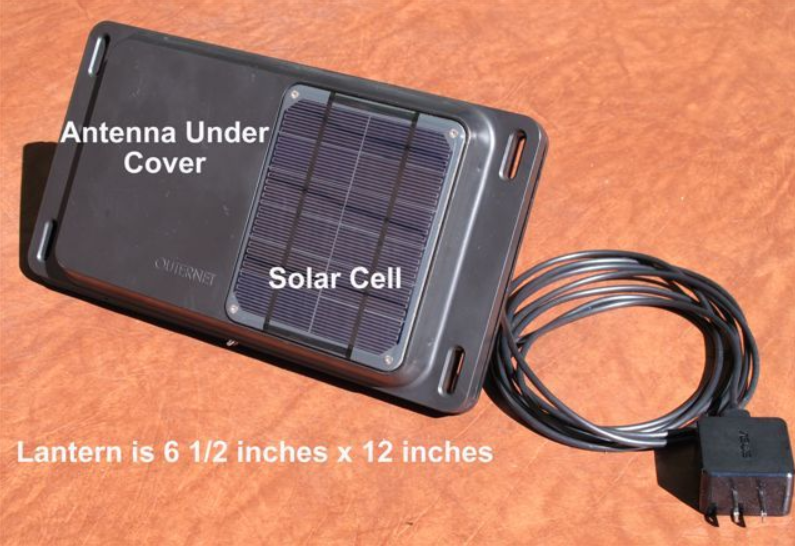
Internet data is transmitted from 3 L-band satellites:

I4F3-Americas at 98W
Center frequency: 1539.8725 MHz
Channel bandwidth: 5 kHz
Polarization: RHCP
Coverage area: All of North and South America, including all of the Caribbean, southern Greenland, and southeastern Alaska.
Alphasat at 25E
Center frequency: 1545.94 MHz
Channel bandwidth: 5 kHz
Polarization: RHCP
Coverage area: All of Africa, Europe (including Iceland), Middle and Near East.
I4F1-APAC at 144E
Center frequency: 1545.9525 MHz
Channel bandwidth: 5 kHz
Polarization: RHCP
Coverage area: All of Asia from India eastward to Hawaii, including all parts of Oceania.
Reception requires a patch antenna for this range, a low-noise amplifier (LNA) and an SDR receiver. According to the authors, the equipment can be bought from them on the site, but theoretically, it should make money on any similar hardware.
This is how the signal on SDR looks like:
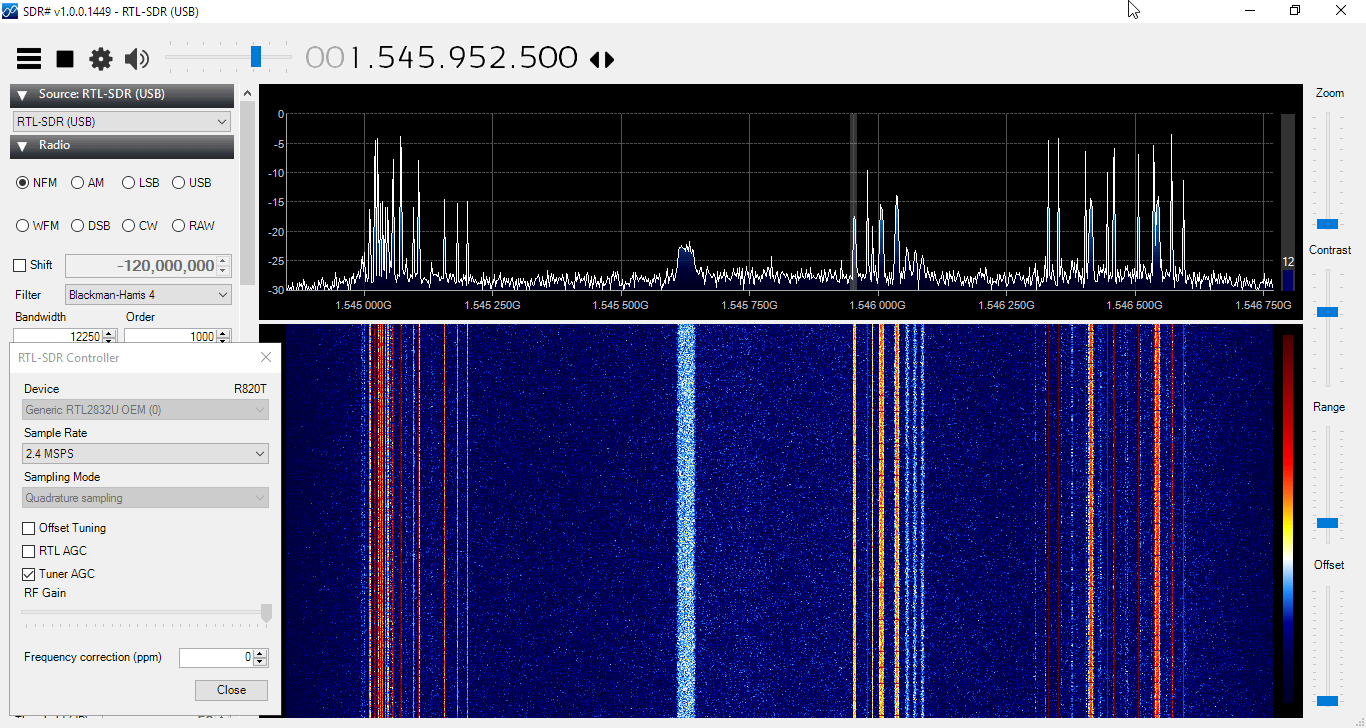
(photo from www.rtl-sdr.com )
The Linux mini-computer offered by the authors has an already built-in satellite receiver:
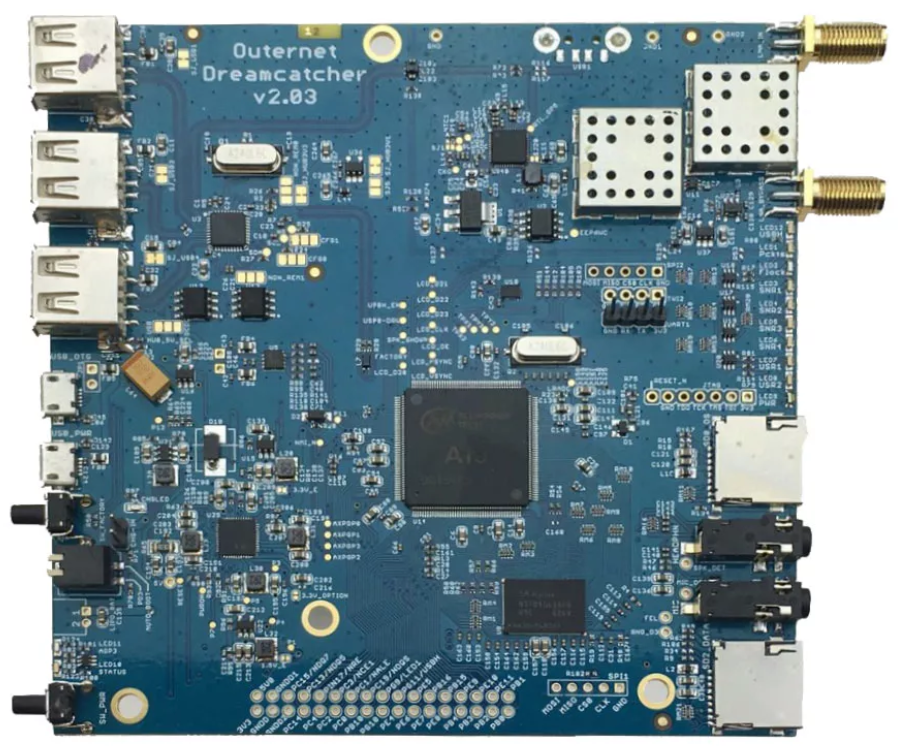
The price of the computer is $ 59, as already mentioned, according to its capabilities it is approximately comparable to the Raspberry Pi.
The entire setup as a whole, including the antenna, has compact dimensions. Photo from John's Musings blog for clarity of scale ( original blog ):
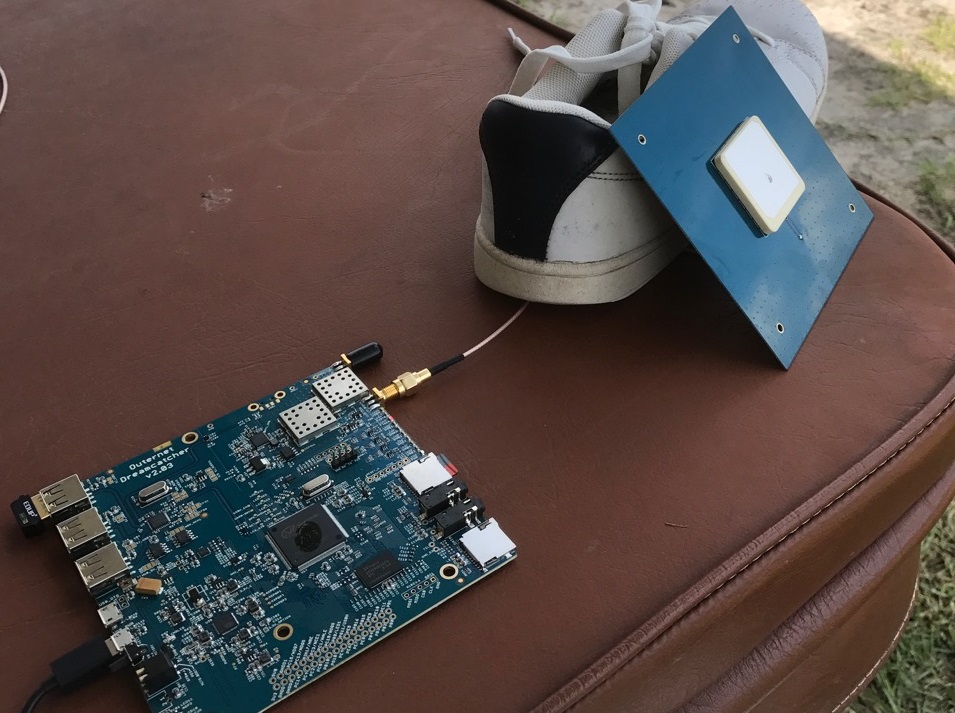
I must say that not only for travelers or residents of remote places, but also for those countries where the Internet can be blocked or banned, such antenna dimensions are a plus.
Data is received at a speed of about a megabyte per hour, it is stored on this computer, and can be accessed through a web interface.
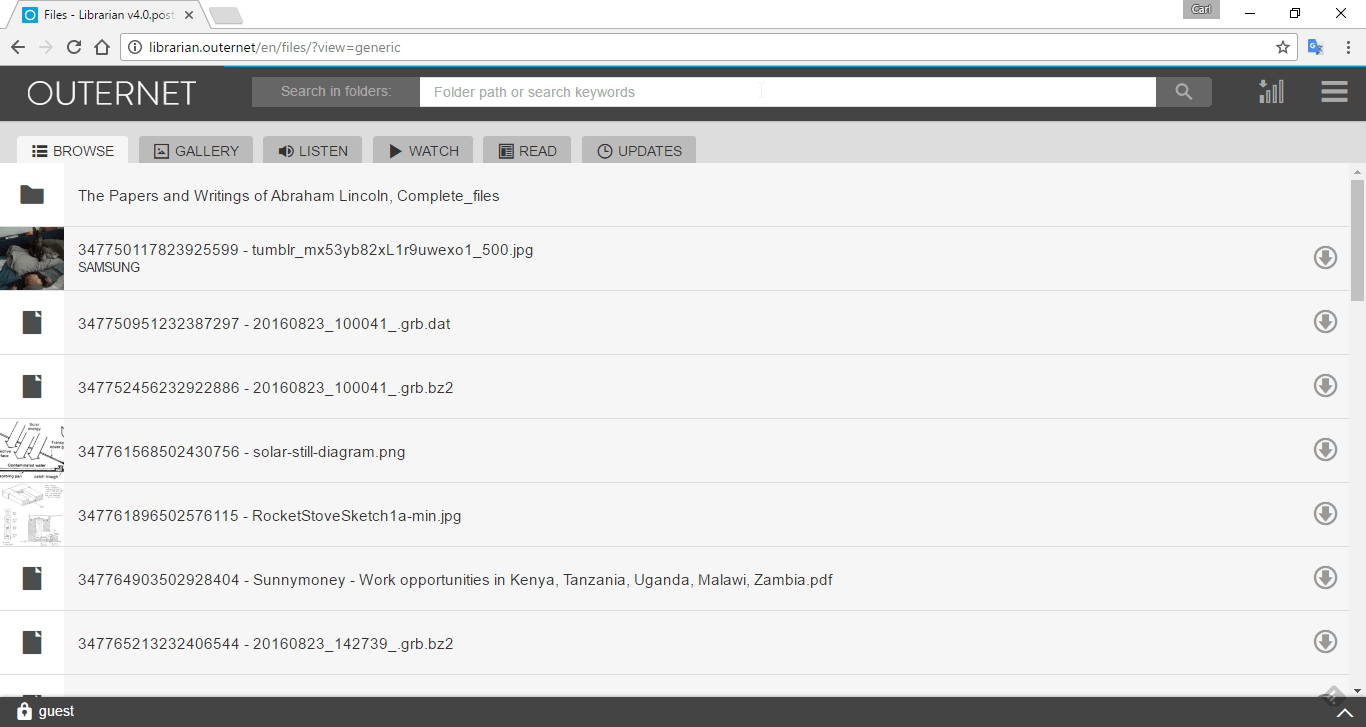
(photo from www.rtl-sdr.com )
The system is also focused on extreme travelers, so much attention is paid to access to a detailed weather forecast:
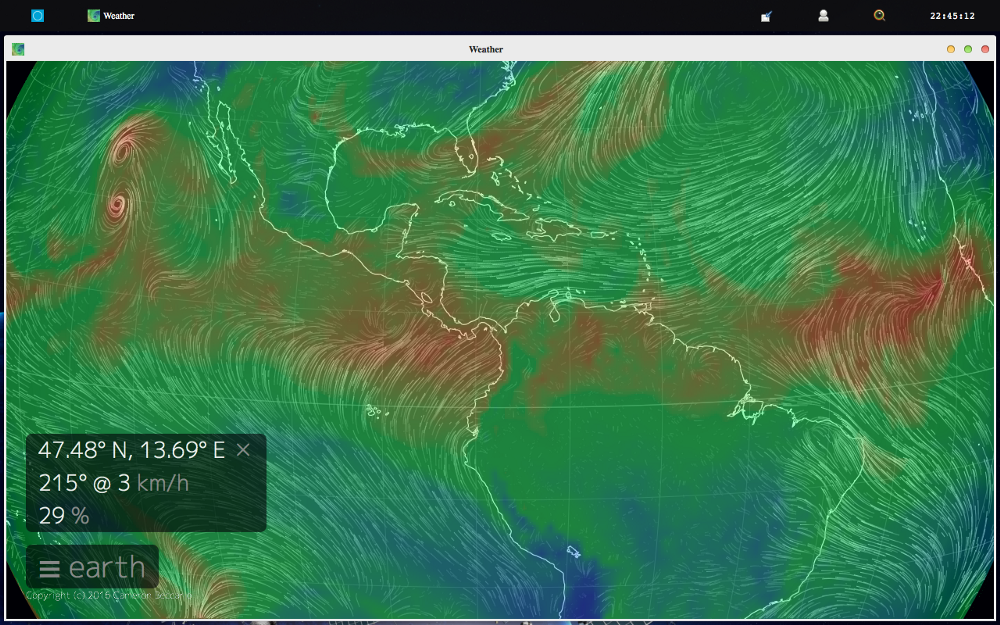
The device works fully automatically, downloads files in the background, the user essentially receives 20 MB of fresh data per day for free. Files are stored in the computer, so you can access them later, the maximum amount is limited only by the size of the memory card. Unlike satellite TV, where you need to wait for the desired program, Outernet is functionally closer to the torrents - files are downloaded and stored on the device, you can view them at any convenient time. The second difference is that the data flow here is less, respectively, lower requirements for the antenna.
Probably, if I had a “house in the village” where there is no Internet or it is very expensive, it would be relevant to have such a device.
I do not know whether this startup will “fly” or not. It is obvious that such a thing is generally not necessary for an ordinary city dweller, and the payback of the project is questionable. But the idea of open and free access to the Internet for all, even in read-only mode, is definitely interesting and deserves attention. And not only for travelers or residents of remote places, but also in those countries where the “external” Internet can be closed at any time. At least, it is good that modern technologies allow, at least theoretically, to give free and anonymous access to data to everyone. Previously, people with HF radios caught “voices”, in the 21st century this can again work at a more modern level. Let us hope, however, that this will not come to this, but technically, the possibility of such a technique is very interesting.
An overview of the settings for the entire system (in English) can be viewed on youtube:
Project files and system images can be found on github at github.com/Outernet-Project . In the comments suggested a link to the reverse engineering project and a description of the communication protocol: destevez.net/tag/outernet .
Theoretically, the satellites are working now, so everyone can take data (alas, I don’t have such equipment).

How it works, details under the cut.
')
Outernet
The idea is not new in principle, and on the one hand it is trivial: satellite Internet. It is as if it is not new, what is the essence of the novelty?
The question is in the implementation features:
- Access to Outernet data is free for all.
- To receive data, a rather compact (and I will notice, inconspicuous) antenna, a cheap SDR receiver and a mini-computer, similar to the Raspberry Pi. In the first version of the system, a $ 9 CHIP computer was used, then the company released its own, with built-in SDR. The price of the entire set, according to the authors, does not exceed $ 100 (in fact, the company apparently plans to make money by selling hardware, since the service is provided free of charge).
- The mini computer accepts data, it also creates a WiFi network around itself, to which several users can connect. Those. Theoretically, such a system can be used even in the jungle, there would be a solar battery or another power source.
The attentive reader probably noticed a trick in the word "SDR-receiver", and asked the obvious question - how to transfer data? The answer -

Principle of operation
Internet data is transmitted from 3 L-band satellites:

I4F3-Americas at 98W
Center frequency: 1539.8725 MHz
Channel bandwidth: 5 kHz
Polarization: RHCP
Coverage area: All of North and South America, including all of the Caribbean, southern Greenland, and southeastern Alaska.
Alphasat at 25E
Center frequency: 1545.94 MHz
Channel bandwidth: 5 kHz
Polarization: RHCP
Coverage area: All of Africa, Europe (including Iceland), Middle and Near East.
I4F1-APAC at 144E
Center frequency: 1545.9525 MHz
Channel bandwidth: 5 kHz
Polarization: RHCP
Coverage area: All of Asia from India eastward to Hawaii, including all parts of Oceania.
Reception requires a patch antenna for this range, a low-noise amplifier (LNA) and an SDR receiver. According to the authors, the equipment can be bought from them on the site, but theoretically, it should make money on any similar hardware.
This is how the signal on SDR looks like:

(photo from www.rtl-sdr.com )
The Linux mini-computer offered by the authors has an already built-in satellite receiver:

The price of the computer is $ 59, as already mentioned, according to its capabilities it is approximately comparable to the Raspberry Pi.
The entire setup as a whole, including the antenna, has compact dimensions. Photo from John's Musings blog for clarity of scale ( original blog ):

I must say that not only for travelers or residents of remote places, but also for those countries where the Internet can be blocked or banned, such antenna dimensions are a plus.
Data is received at a speed of about a megabyte per hour, it is stored on this computer, and can be accessed through a web interface.

(photo from www.rtl-sdr.com )
The system is also focused on extreme travelers, so much attention is paid to access to a detailed weather forecast:

The device works fully automatically, downloads files in the background, the user essentially receives 20 MB of fresh data per day for free. Files are stored in the computer, so you can access them later, the maximum amount is limited only by the size of the memory card. Unlike satellite TV, where you need to wait for the desired program, Outernet is functionally closer to the torrents - files are downloaded and stored on the device, you can view them at any convenient time. The second difference is that the data flow here is less, respectively, lower requirements for the antenna.
Probably, if I had a “house in the village” where there is no Internet or it is very expensive, it would be relevant to have such a device.
findings
I do not know whether this startup will “fly” or not. It is obvious that such a thing is generally not necessary for an ordinary city dweller, and the payback of the project is questionable. But the idea of open and free access to the Internet for all, even in read-only mode, is definitely interesting and deserves attention. And not only for travelers or residents of remote places, but also in those countries where the “external” Internet can be closed at any time. At least, it is good that modern technologies allow, at least theoretically, to give free and anonymous access to data to everyone. Previously, people with HF radios caught “voices”, in the 21st century this can again work at a more modern level. Let us hope, however, that this will not come to this, but technically, the possibility of such a technique is very interesting.
An overview of the settings for the entire system (in English) can be viewed on youtube:
Project files and system images can be found on github at github.com/Outernet-Project . In the comments suggested a link to the reverse engineering project and a description of the communication protocol: destevez.net/tag/outernet .
Theoretically, the satellites are working now, so everyone can take data (alas, I don’t have such equipment).
Source: https://habr.com/ru/post/370883/
All Articles